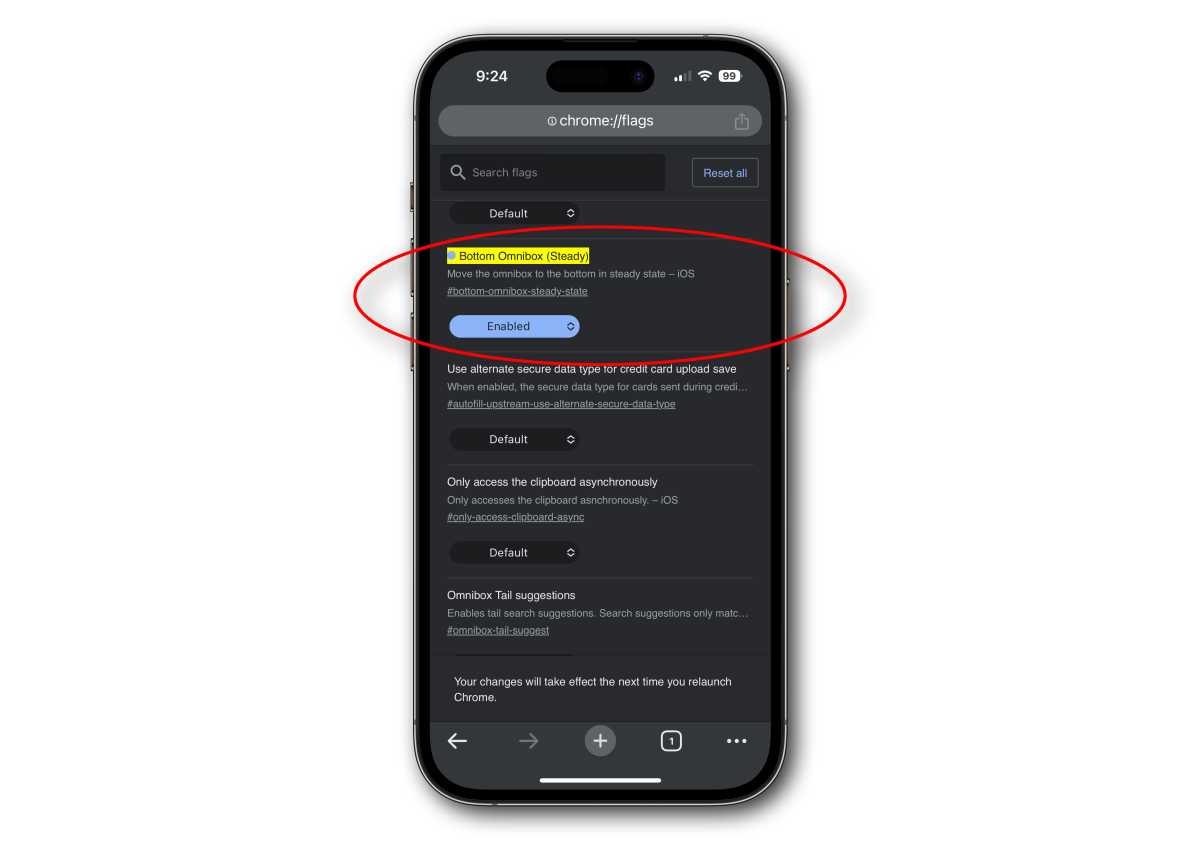
With iOS 15, Apple made the controversial decision to move the address and search bar in Safari to the bottom of the browser window. This was a hotly contested move during the beta process, where it was rife with problems. But Apple listened and made a host of major changes before the iOS 15 final release, including the ability to revert the bar to the top of the screen in Settings.
Now, two years later, Safari’s biggest rival is preparing to make the same change. Google is currently testing the ability to move the Omnibox (its name for the address-and-search bar) to the bottom of the screen. You’ll have to enable it by using a feature flag rather than the app settings for now, and it’s still in beta. Eventually, it is expected to graduate to a regular option or possibly even the default.
To enable the bottom Omnibox in Chrome on iOS, enter the following into the address bar and tap Go:
chrome://flags/#bottom-omnibox-steady-stateFrom the resulting screen, look for the Bottom Omnibox (steady) setting, which should be highlighted. Change the selection to Enabled. Then close Chrome and relaunch it. Your Omnibox should now be on the bottom.

Foundry
Google has experimented with a bottom address bar in Android over the years, but it never became a feature in the browser. It’s not clear whether Google is planning to offer this new bottom omnibox in Chrome for Android or if it will ever become a main feature on iOS.






